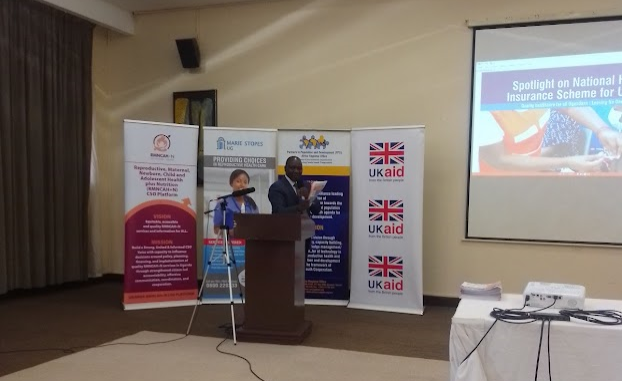The Partners in Population Development Africa Regional Office (PPD ARO) met with stakeholders on Tuesday for a high-level stakeholder engagement on innovative financing and the Uganda National Health Insurance Scheme discussion in greater detail.
Health is one of the most expensive aspects of public life, thus the government, together with players in the private sector, met to discuss solutions to provide accessible, high-quality healthcare in hospitals. Most people can almost pay the prices, especially at private hospitals, given the rising rates of poverty.
At a meeting held at the Protea Hotel in Kampala, the Partners in Population Development Africa Regional Office discussed the National Health Insurance Scheme (NHIS), which is expected to benefit the majority of the population as a means of achieving universal health coverage in Uganda. Participants included members of parliament, civil society, development partners, consumers, and the media.
The Sustainable Development Goals (SDGs) set forth steps that UN members, including Uganda, must take in order to achieve universal health coverage by the year 2030.
This is expected to make it possible for the general population to access high-quality healthcare without having to struggle with personal medical debt. Through the NHIS, individuals and households pay a certain sum to a fund holder who then pays authorized health service providers to offer the specified package of services to the general public.

The public is anticipated to be alleviated of the health costs and concerns associated with emergencies through this program, particularly during lean economic times.
The three components of universal health coverage are; providing coverage to the majority of the population, making priority services available, and pooling resources to prevent situations where people get seriously ill and then have to start looking for money.
‘’Health insurance coverage in Uganda still stands low at 5% of the population, which is a huge challenge given our counterparts from neighbouring countries whose health insurance coverage is proliferating,’’ says Hon. Ssebikaali Joel, the Kyankwanzi Vice Chairperson on Health Committee.
Given the existence of the free care policy, Uganda is currently the only nation in all of East Africa without a national health programme. Individuals in Uganda pay over 38% of the cost of medical care, followed by development partners at 41% and the government at 16%.
Mr. Walimbwa Ali, the desk officer at the NHIS, Ministry of Health, stated during the stakeholder engagement that ‘’a lot has been gained in pushing for the initiative’’. Through consultative meetings, we have been engaging with key stakeholders and discussing the future of NHIS with each participant in the health sector’’
Dr. Charles Olaro, Director of Curative Services at the Ministry of Health, asserts that the programme has encountered significant bottlenecks, including divergent stakeholder interests, a lack of cooperation, an unwillingness among stakeholders to experiment with resource mobilization, and a lack of knowledge of the advantages of the NHIS. Steps forward include, among others, prioritizing supply chain advancements, such as infrastructure, workforce levels, and strengthening local governments, as well as conducting financial analysis to inform the public.
Since the National Health Insurance Scheme Bill was returned by His Excellency the President from Parliament to the Ministry of Health, the consultation process towards re-tabling it to Parliament is progressing well. The Ministry of Health shared a roadmap to this effect that involves stakeholder consultation leading to cabinet approval and presentation of the bill to Parliament for debate before the close of this year.
In Uganda, out-of-pocket health spending is higher than the global average of 18%, reaching nearly 40%. (World Bank data). Older individuals, who are not only susceptible to health issues but also do not have a clear cash flow, are particularly affected by this hardship.
In Uganda, out-of-pocket expenses made up 38.3% of total annual health spending in 2019. Despite significant fluctuations in recent years, Uganda’s out-of-pocket spending as a percentage of current health spending tends to decline from 2000 to 2019, when it reached 38.38%.
In Uganda, the cost of healthcare in 2019 was US$32, a 1.1% increase over the cost in 2018, up 4.47% from 2017 and 2017 was US$31, a decrease of 19.77% from 2016 according to World Atlas.
About Guide2Uganda
Guide2Uganda (www.guide2uganda.ug) is the most comprehensive source of travel information about Uganda that exists on the web, with more content on its cities & towns, accommodation, attractions, events, museums, and galleries than any other online guide that currently exists for Uganda; as well as being a piece of dynamic travel news and events drove site with fresh content added daily.
According to WeFollow & Peer Index (which measures online influence), we are among Uganda’s most influential online media organizations. Guide2Uganda was also awarded ‘’Best Destination Website in Uganda’’ by Jumia Travel Uganda in the 2018 Africa Travel Awards.
Share your travel stories & photos with the world via email: info@guide2uganda.ug



